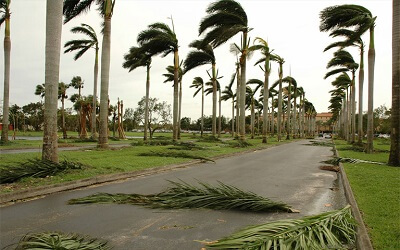Got a Hurricane Safety Plan?
The Atlantic hurricane season is upon us.

Loss of electricity is a major concern when a severe storm comes upon us. Always Ready Generators urges you to be prepared and be aware of potential electrical hazards at all times, especially during and after a severe storm.
While in the eye of a hurricane is no time to be preparing an electrical generator or trimming trees away from power lines. The time for that is now.
Install a Standby Backup Generator
If you plan to ride out a hurricane at home, seriously consider installing a backup generator. A permanent backup generator is often viewed as the best option for homeowners because it can provide automatic, whole-home power during extended outages.
When the utility power is lost during a hurricane a backup generator can be a life saver. When severe weather strikes it may take the utility company days or possibly weeks to restore power.
If a standby generator is to be part of your hurricane safety plan, be sure to use it properly.
Hire a licensed electrician to connect the generator to your house wiring using a transfer switch to prevent your generator from back-feeding utility lines.
Portable, gasoline-powered generators
- Portable, gasoline-powered generators are dangerous and noisy, but better than nothing when electrical power is lost in a hurricane. But, the dangers are many and care must be take to use the equipment properly.
Thoroughly read and follow the manufacturer’s instructions to ensure the safe operation of your generator. - Set it up outside, away from all open windows to prevent deadly exhaust from entering a home or business.
- Use a heavy-duty extension cord rated for safe outdoor use. If the generator has a three-prong plug, always use a three-prong extension cord.
- Consider using a battery-operated carbon monoxide alarm to be alerted to dangerous carbon monoxide levels.
- Connect appliances directly to the generator.
- Do not wire your generator directly to your breaker or fuse box, because the power you generate may flow back into power lines and cause severe injuries to yourself or others.
- Turn off all connected appliances before starting your generator.
- Turn connected appliances on one at a time, never exceeding the generator’s rated wattage.
- Don’t touch a generator if you are wet or are standing in water or on damp ground.
- Never refuel a hot generator or one that is running, as hot engine parts or the exhaust can ignite gasoline.
- Store gas safely in gas containers.
- Don’t leave a running generator unattended.
Power Line Tree Trimming
When trees grow into or near power lines, they can cause power interruptions. The dangers involved in trimming trees around power lines are well know and respected by professionals.
If your unsure about whether you should be trimming a tree yourself, call FPL for advice. They monitor tree growth and trim the entire length of their power lines on a regular basis. It is in their interest to insure their utility lines are not exposed to likely damage from trees and vegetation around power lines.
If a tree condition needs trimming outside of regular maintenance, FPL will let you know by leaving an inspection notice card with a scheduled work date.

Ready for Storm Season?
Get our free hurricane checklist
Sign up to download your checklist.
